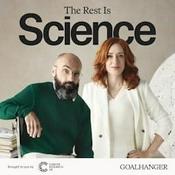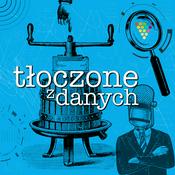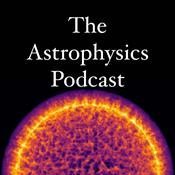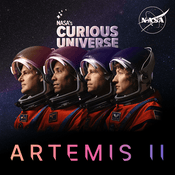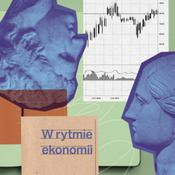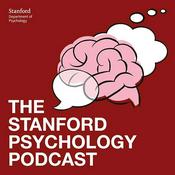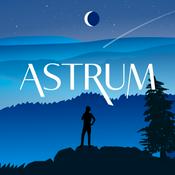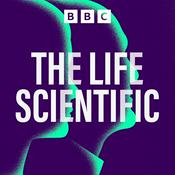140 odcinków
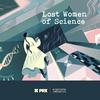
The Lost Women of Science - Our Book for Young Readers
04.12.2025 | 21 min.
The Lost Women of Science by Melina Gerosa Bellows and Katie Hafner is an exciting book for young readers that brings to life the stories of ten remarkable women who changed the world of science but have been forgotten, or written out of history completely. Published by Penguin Random House’s Bright Matter imprint, the book transforms podcast episodes into a collection of inspiring biographies written for middle school readers. In this Lost Women of Science Conversation, Melina and Katie talk about their favorite female scientists and why their grit and determination can help inspire curiosity in the next generation of young female (and male) scientists. For parents, teachers or grandparents looking to spark a love of science in the young people in their lives, look no further than this book this holiday season. Learn about your ad choices: dovetail.prx.org/ad-choices

For Susan
20.11.2025 | 22 min.
In 2022, Susan Wojcicki was on top of the world—CEO of YouTube, parent to five kids, and running a few miles a day—when she received a shocking diagnosis: metastatic lung cancer. She soon resigned from YouTube and dedicated herself to fighting the disease and looking for answers. Why does the leading cause of cancer deaths receive less funding than some less lethal cancers? How could her lung cancer have progressed so far undetected? And how did Susan get lung cancer, when she had never smoked? This episode is dedicated to her. Learn about your ad choices: dovetail.prx.org/ad-choices

The Mouse Lady
13.11.2025 | 29 min.
In the 1910s, a relatively unknown cancer researcher named Maud Slye announced the first results of a study with the loftiest ambitions: to identify what causes cancer. To answer that question, the University of Chicago geneticist had bred tens of thousands of mice, enough to fill a three-story building. She carefully documented their ancestry and their morbidities and performed autopsies. And to Slye, her findings were clear: vulnerability to cancer was hereditary. If we wanted to, we could eliminate it. But Slye made some crucial mistakes along the way—and a number of enemies. Learn about your ad choices: dovetail.prx.org/ad-choices

Lost Women of Science Conversations: Rosalind - The Opera
06.11.2025 | 29 min.
Composer Peter Hugh White and librettist Clare Heath join host Rosie Millard in front of a London audience to explore why the story of chemist and x-ray crystallographer Rosalind Franklin and the race to uncover the structure of DNA makes such a compelling subject for an opera.We hear excerpts that capture the contrasting personalities at the centre of this scientific drama — James Watson, the brash young researcher at the University of Cambridge; Francis Crick, his more measured collaborator; and Maurice Wilkins, an anxious biophysicist uneasy about being outshone by his brilliant colleague, Franklin.It’s a story of ambition, rivalry, and betrayal: Franklin’s departure from King’s College London and the subsequent publication of the double helix model by Watson and Crick, which was built on insights from her work — yet without giving her due recognition. Learn about your ad choices: dovetail.prx.org/ad-choices

Best Of: Finding Dora Richardson: The Forgotten Developer of Tamoxifen, a Lifesaving Breast Cancer Therapy - Episode Two
16.10.2025 | 36 min.
Although initial clinical trials of tamoxifen as a treatment of breast cancer were positive, Imperial Chemical Industries (ICI) did not believe this market would be commercially viable. The company had hoped for a contraceptive pill – tamoxifen didn’t work for that – not a cancer treatment. In 1972 the higher-ups at ICI decided to cancel the research.But Dora Richardson, the chemist who had originally synthesized the compound, and her boss, Arthur Walpole, were convinced they were on to something important, something that could save lives. They continued the research in secret. Tamoxifen was eventually launched in 1973 and went on to become a global success, saving hundreds of thousands of lives. Dora Richardson’s role in its development, however, was overshadowed by her a male colleague and all but forgotten.This Best Of episode first aired in October 2024 to coincide with Breast Cancer Awareness month. It is now also available in a Spanish adaptation, narrated by Laura Gómez. Learn about your ad choices: dovetail.prx.org/ad-choices
Więcej Nauka podcastów
Trendy w podcaście Nauka
O Lost Women of Science
Słuchaj Lost Women of Science, Nauka To Lubię i wielu innych podcastów z całego świata dzięki aplikacji radio.pl

Uzyskaj bezpłatną aplikację radio.pl
- Stacje i podcasty do zakładek
- Strumieniuj przez Wi-Fi lub Bluetooth
- Obsługuje Carplay & Android Auto
- Jeszcze więcej funkcjonalności
Uzyskaj bezpłatną aplikację radio.pl
- Stacje i podcasty do zakładek
- Strumieniuj przez Wi-Fi lub Bluetooth
- Obsługuje Carplay & Android Auto
- Jeszcze więcej funkcjonalności


Lost Women of Science
pobierz aplikację,
zacznij słuchać.

